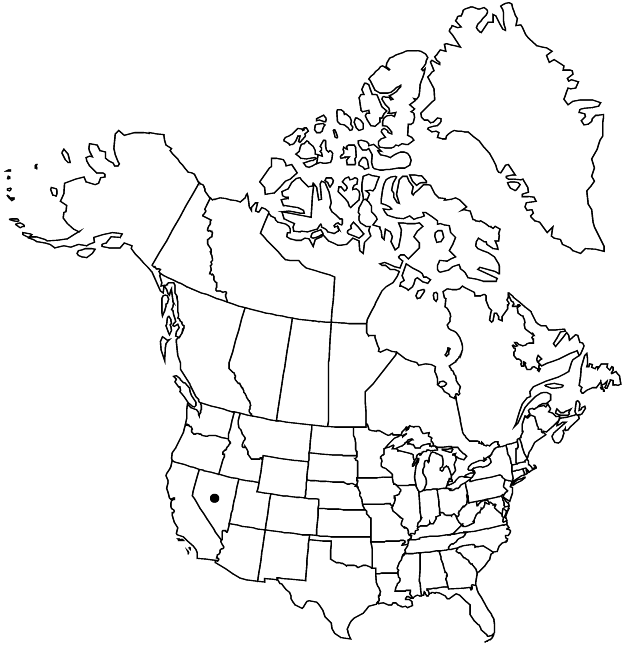Eriogonum tiehmii
Great Basin Naturalist 45: 277. 1985.
Herbs, matted, scapose, 1–1.5 × 0.5–3 dm, floccose, grayish. Stems spreading, with persistent leaf-bases, up to 1/5 height of plant; caudex stems matted; aerial flowering-stems scapelike, erect, slender, solid, not fistulose, (0.6–) 1–1.3 (–1.5) dm, floccose. Leaves basal, fasciculate in terminal tufts; petiole 0.5–1.6 (–2) cm, tomentose; blade elliptic to oblong, (0.8–) 1–2.5 (–3) × 0.5–0.8 (–1) cm, densely white or grayish-tomentose on both surfaces, margins plane. Inflorescences capitate, 0.9–1.4 cm wide; branches absent; bracts 3, scalelike, triangular, 1–1.5 mm. Peduncles absent. Involucres 4–8 per cluster, turbinate-campanulate, 4–5 × 3–4 mm, rigid, floccose; teeth 5–6, erect to slightly spreading, 1.5–2 mm. Flowers 2.5–3.5 (–4) mm; perianth yellowish white or whitish to cream, sparsely glandular abaxially; tepals connate proximal 1/4, monomorphic, oblong; stamens exserted, 3–4 (–4.5) mm; filaments pilose proximally. Achenes light-brown, 3–4 mm, glabrous.
Phenology: Flowering May–Jun.
Habitat: Rocky clay slopes and washes, saltbush communities
Elevation: 1800-1900 m
Distribution

Nev.
Discussion
Of conservation concern.
Eriogonum tiehmii is known only from the Silver Peak Range of Esmeralda County. It is considered a “sensitive” species in Nevada.
Selected References
None.
Lower Taxa
"/2" is not declared as a valid unit of measurement for this property."dm" is not declared as a valid unit of measurement for this property."dm" is not declared as a valid unit of measurement for this property."dm" is not declared as a valid unit of measurement for this property.